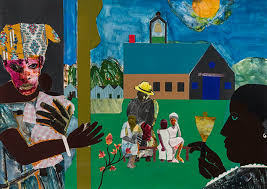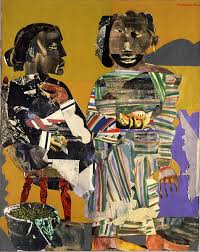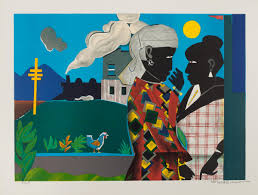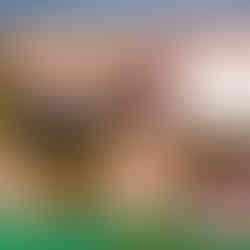Ecoart through our Lens
- Shelby
- Apr 18, 2020
- 3 min read
Updated: May 20, 2020
Ecological art, Sustainable art, or Environmental art has quite a few definitions, but from everything I've read, one thing stands true: it examines the relationship between us and our environment. Many times there are environmental issues addressed, restoration of sites, and eco-friendly materials. There is usually an advocacy goal - trying to inspire folks to change their exploitation of mother earth or to move folks to treat earth better.

And so whether the artist uses a worn glove left in the woods to address the damage of litter. Or an artist creates a masterpiece with landfill waste. It's about our experience with the natural environment. Most of the time, there is this theme of beauty and abuse—our abuse of nature and the beauty of the piece itself.
I've always loved art. And so when I found eco-art, I fell in love with the art/advocacy form. The idea of using materials deemed broken, "useless," and have been thrown out and making them into art and means of activism struck every chord in my soul. Reading about it, automatically brought (two of my favorite artists) Romare Bearden and Clementine Hunter to mind.
Bearden is by far one of my top three favorite artists (if not my favorite), and so I always think of him when I explore an art form. His art often shows black people in our natural element. His mother, Bessye Bearden, was a political powerhouse, education advocate, and a journalist. And she and her husband raised their son, Romare, to be a brilliant man that was very well-versed in literature, a social worker, and a compelling artist (and so much more). One of the reasons I fell in love with his art is his images of women. Whether we are on the train, in the fields, in the kitchen (with the kitchen doors wide open), or holding hands with a fellow black woman -we always have a dignity, a strength, and yet a gentleness (that few folks depict in black womanhood). When the High Museum of Art published a Romare Bearden exhibit, I rushed my boys to the exhibition. They loved it. There was so much nature and also the black experience captured and set in time. It was flawless. Showing us with our chickens, working on the plantations, living in small shanties(cabins), holding the plow and being agriculturalist - it's eco-art.
Technically, Ms. Hunter is a folk artist. But for me, she is the pure definition of an Eco-artist. There is no one that better captures the black experience to nature in the south (plantation life); she also used discarded art supplies. Hunter was a self-taught artist that didn't even begin painting until she was in her 50s and a grandmother. She was an artist and a brilliant cook. I found a few of her recipes online (took lots of digging) from her cookbook, Melrose Plantation Cookbook. I cannot find a copy of her cookbook - it's scarce. But her pictures are easily found and they illustrate black people working on the plantation, burying our dead, riding chickens, and walking our pet chickens. One of the reasons I adore her work is unity. Many of her pieces show us working with one another, holding hands, worshiping together, and breaking bread. The essence of hard-working people that loved our community while also knowing the environment (as well as ecologists, agriculturalists, and environmental scientists) oozes out of her pictures. Her art shows black people, animals (particularly chickens), and the environment as one and the same. We are intertwined.
These artists, and many others, force their viewers to remember the deep relationship and ties black people have with agriculture throughout the world. We are reminded of the brilliant people that work and worked our land. No, there isn't a direct environmentalist focus, but there is a theme of doing right by our earth. It's a reminder that systematically and structurally, black people have always been the ones most affected by environmental issues. It moves us to give a prayer of thanksgiving for the intimate relationship (co-dependency) between black people and our natural environment. The only thing we had for so long was the land. We took care of her and she took care of us.
Well, I can go on and on about eco-art and the artists that inspire me. But, I have another surprise up my sleeve. Pray that you are doing well.
Shalom,
Shelby














I love your Ecoart! I just visited the Taft Art Museum in Cincinnati....but enjoyed your art showing more!
Hi thaanks for posting this